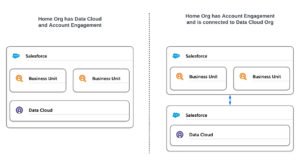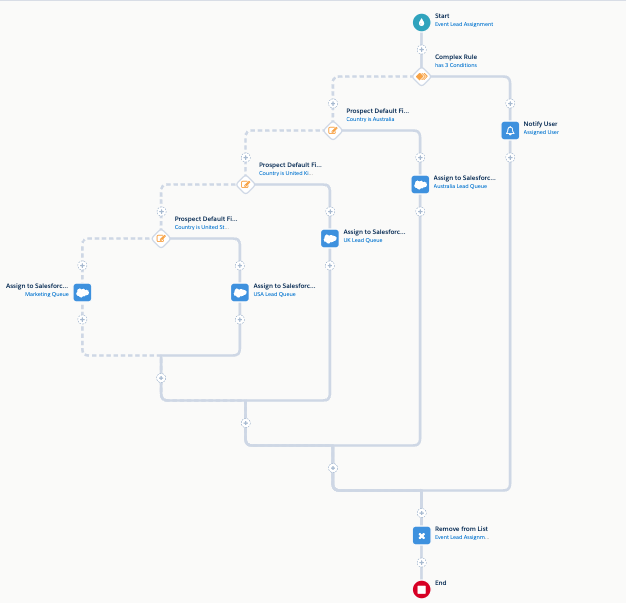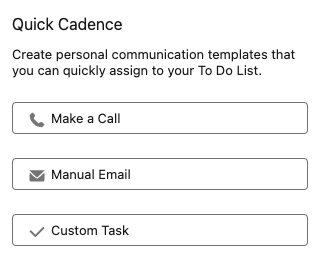10 Rules for Pardot Engagement Studio Wait Times
- March 29, 2023
- Engagement Studio, Salesforce Ben | The Drip
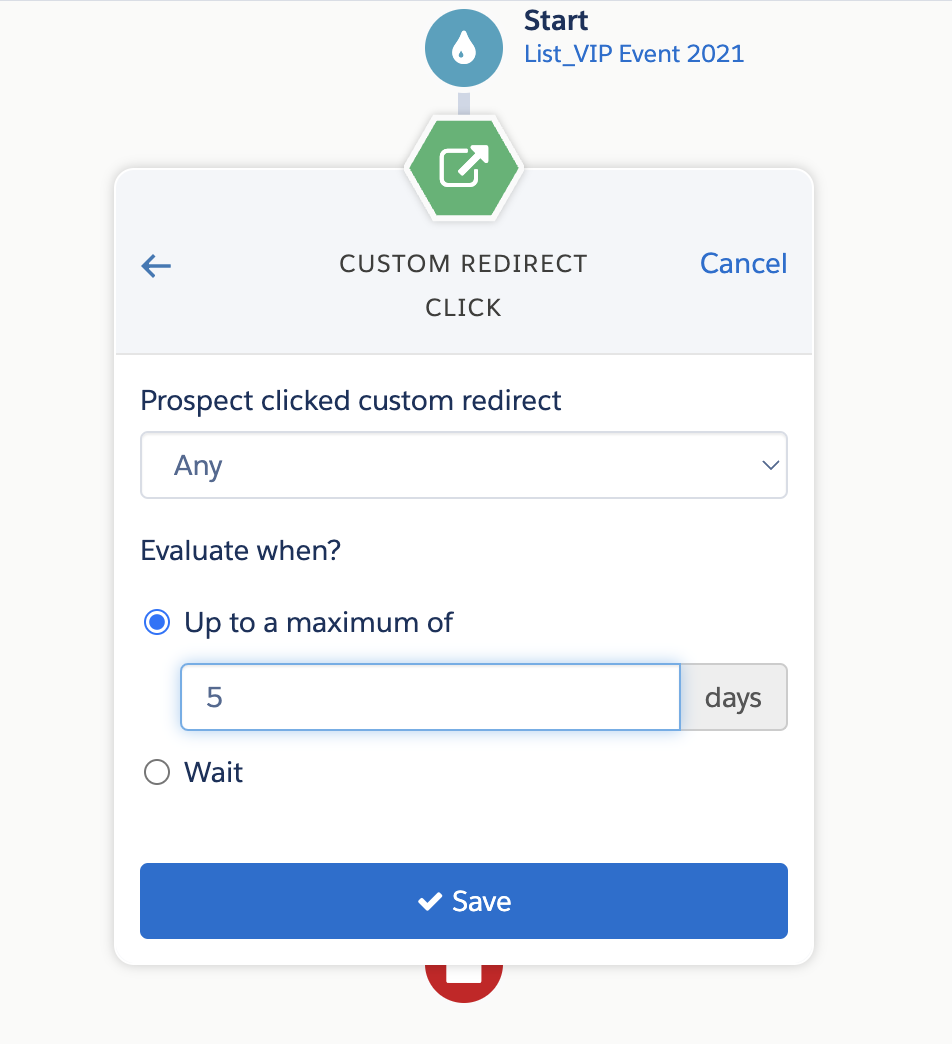
The main aim of Account Engagement (Pardot) Engagement Studio is to set up campaign automation that treats each prospect as an individual – in other words, they progress through the program at a pace according to their level of engagement or field data. Marketers design these paths using a combination of action, trigger, and rule steps. Each of these can have a wait period added – however, how wait periods work will depend on the step type, plus the status of the program itself (running or paused).
As you need to consider both the step type and program status (paused or running), understanding wait times in Pardot Engagement Studio isn’t straightforward. This is why I outlined these rules, which hopefully, will help you to get to grips with how your specific program will treat prospects progressing through Engagement Studio.
1. Wait For vs Wait Up To
Action and rule steps can be actioned immediately or after a specific period of time. Trigger steps can be evaluated immediately or after a specific period of time. There is a notable difference between the two:
- Wait for: Engagement Studio holds the prospect at that step for exactly the defined wait period – no shorter, no longer.
- Wait up to (a maximum of): Engagement Studio holds the prospect at that step, but allows the prospect to progress if they take the action/meet rule criteria sooner. When the defined wait period passes, any remaining prospects will progress to the next step.
| Wait for (specific) | Wait up to | Immediately | |
|---|---|---|---|
| Actions | ✅ | ❌ | ✅ |
| Rules | ✅ | ❌ | ✅ |
| Triggers | ✅ | ✅ | ❌ |
Let’s take this trigger as an example. Its purpose is to ‘listen’ for a click on the custom redirect link.
1. The first option is Wait for. Here, we’re instructing Engagement Studio to not trigger the next step until 3 days have passed since the prospect entered the step – no more, no less.
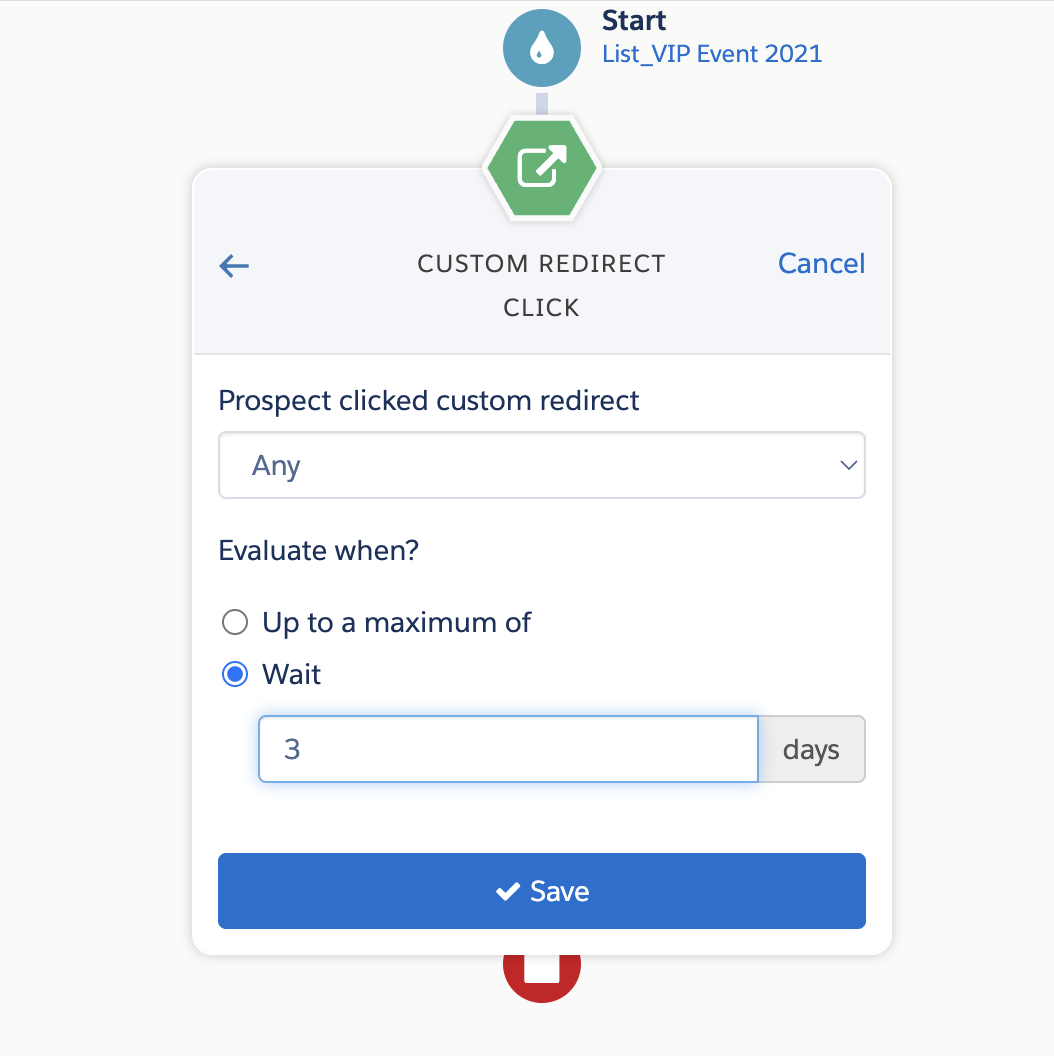
2. The second option is Wait up to. Here, we’re asking Engagement Studio to move the prospect to the next step if and when they click on the custom redirect. If 5 days pass with no click activity, the prospect moves to the next step. “Wait up to” makes more sense for triggers, or to use in a trigger + rule combination, so that you can use branching logic (otherwise, what was the point of the trigger?).

2. Triggers Can Be Immediate
As we saw in the table and example in point #1, you have two wait time options for triggers: either a specific wait time (wait for), or a maximum wait time (wait up to).
Also, you don’t have the choice for triggers to action immediately (that would defeat their purpose, they’re there to ‘listen’ for a prospect taking an action). But, is it true that triggers never fire immediately?
The exception can happen in cases where the prospect makes the action that Engagement Studio is listening out for, in quick succession. For example, send email (action step) → open email (trigger step); then no matter how many days were defined for “wait up to”, as the trigger criteria has been met, the prospect moves to the next step. The trigger has pretty much become real-time.
This helps to further understand how “wait up to” works.
3. Wait Steps Can Be Ignored
There are times when Engagement Studio can ignore the wait period you’ve set. As you’ll see, these instances are logical, but require that you ‘talk yourself’ through each scenario. We’ll cover each of these in detail through the rest of the guide:
- Triggers can be immediate (see point #2).
- Email actions set “On date”.
- Wait periods in paused engagement programs (wait periods that prospects are currently in are also paused).
- Removing waits in Engagement Programs. (The evaluation time period for the trigger is cut. If no trigger match happened in the time period the wait time was active, Engagement Studio assumes no trigger match happened.)
- If the Engagement Studio program is based on a dynamic list, and the prospect no longer matches the list criteria, they will be removed from the program. When re-added, the prospect will go to the next step, which will execute at the scheduled date/time. They do not go back to the same point in the wait period.
4. “On Date” for Email Actions (Date-based Wait)
“On Date” will send an email on the date you specify. Prospects will no longer be in a ‘waiting’ state. This is available on “send email” actions only.
- If the prospect lands on the step after the specified date, the email isn’t sent to them and they move to the next step.
- If the program is paused on the specified send date, the email will not be sent and prospects skip the step.
- If no date is specified, the email is scheduled to be sent immediately when the prospect lands on the step.
Note: “On date” can become hard to manage if this action step comes later in your program, as you may include other wait steps in the program – therefore, you add to the risk that prospects may not reach the “On date” step in time.
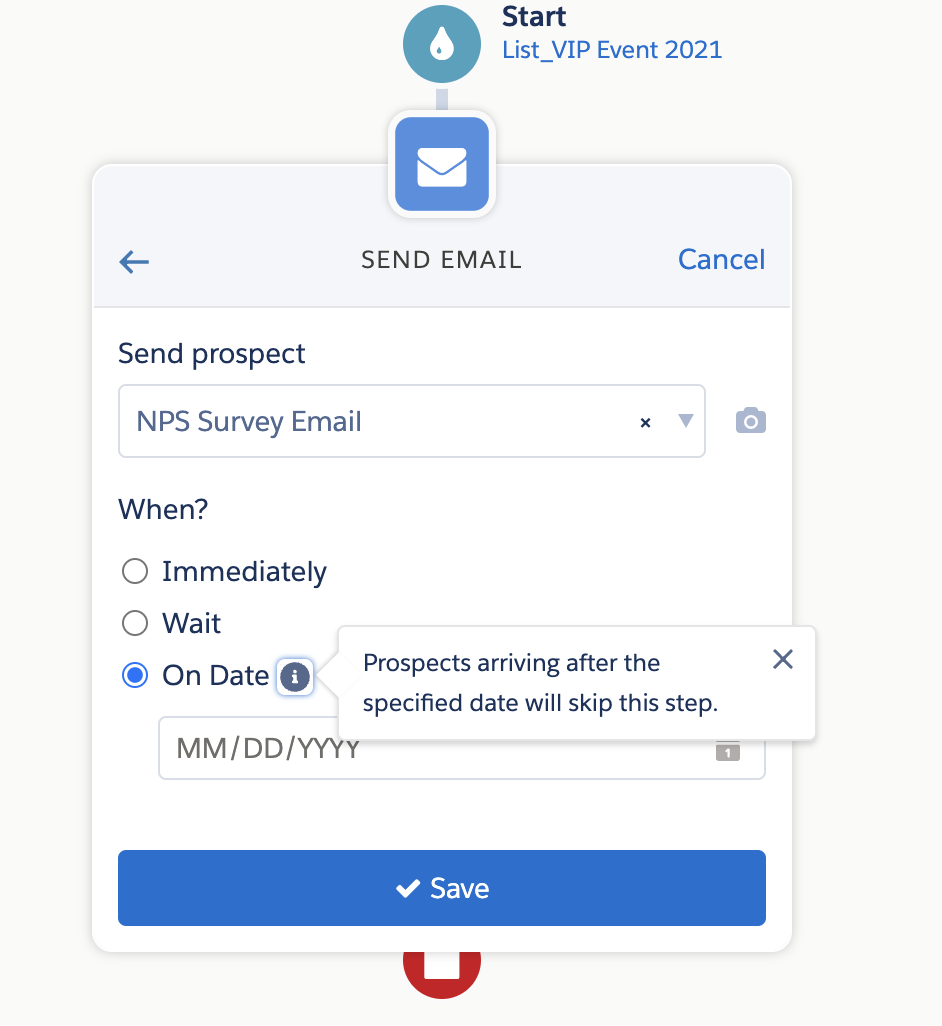
5. Wait Periods in Paused Engagement Programs
If the program is paused, wait periods that prospects are currently in, are also paused. Think of wait periods like stopwatches counting down to when the prospect reaches a step; if the program is not running, the stopwatch is paused.
Reasons why you would pause a program are to edit step/s, add/remove recipient lists, or change the send time logic (i.e. send within business hours) – and also to deactivate the program when it’s no longer required.
In my mind, I’ve thought of pausing Engagement programs like a Formula 1 pitstop (okay, not quite that fast), but you want to reactivate the program in good time, and not forget about it.
Imagine that you pause the program to add an email template send, but then realize that the landing page the email is supposed to be linking out to isn’t completed? Something else requires your attention, and you forget the Engagement program is inactive. Those prospects could be waiting in radio silence for too long!
6. Removing Waits in Paused Engagement Programs
This rule, in my opinion, is the most challenging to grasp – so, here goes!
We saw in point #5 that if the program is paused, all wait periods are also paused. You may pause a program to edit step/s, including wait times on steps.
What if you remove the wait time altogether, what happens when the program is resumed? This is best explained with an example:
- The prospect reaches a trigger step that’s set to wait for 3 days. The prospect does eventually meet the trigger criteria after 5 hours.
- Meanwhile, an internal user paused the Engagement Studio program, removed the wait time, and reactivated the program 2 hours after the prospect had landed on the trigger step.
- The evaluation time period for the trigger has now been cut. With no wait time now that the program has been resumed, Engagement Studio only looks at the first two hours that the prospect was in the wait step (i.e. when the wait step existed). As no trigger match happened in the first two hours, Engagement Studio counts this as no trigger match, therefore sending the prospect down the “no” path.
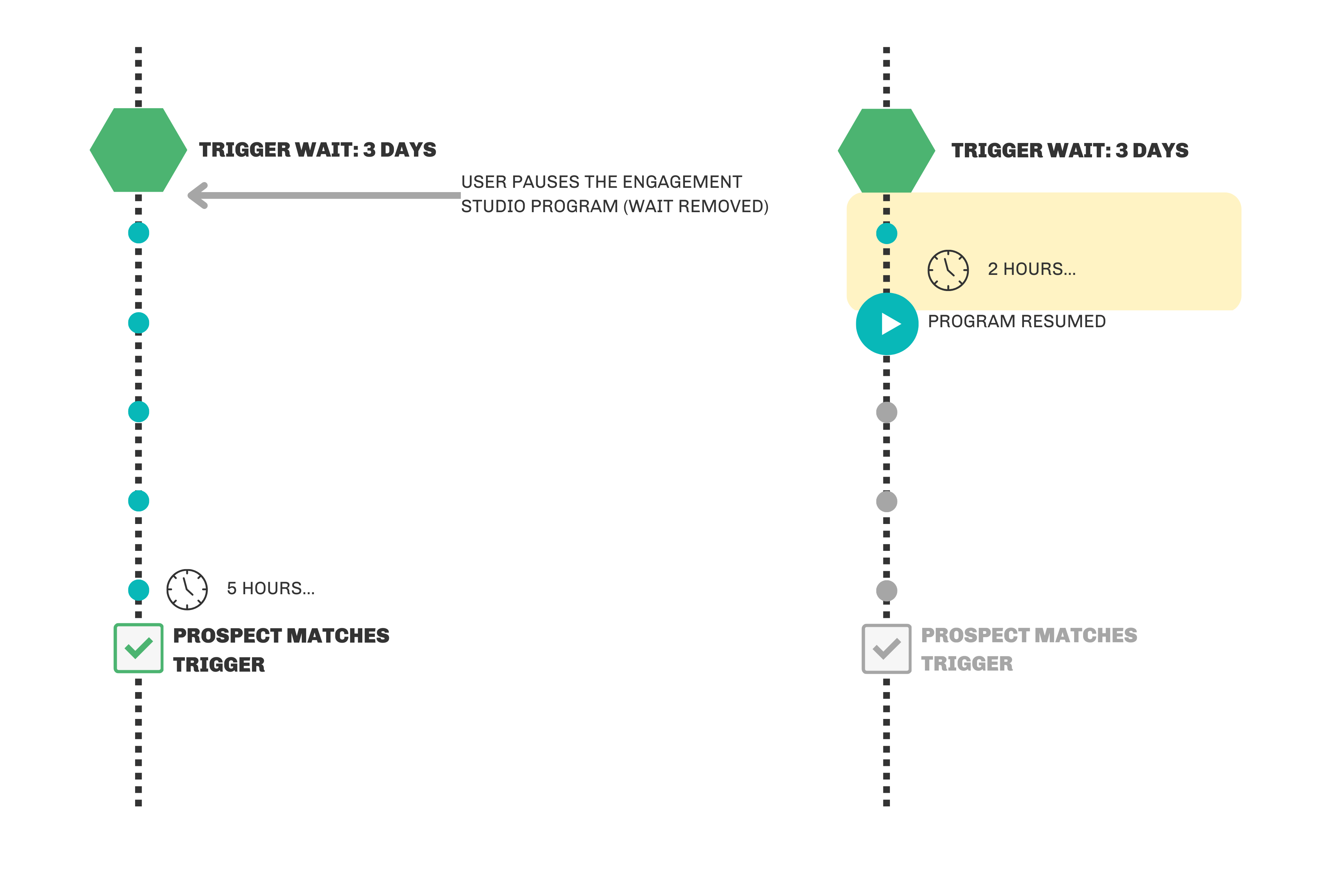
7. Dynamic Lists and Wait Times
If the Engagement Studio program is based on a dynamic list, and the prospect no longer matches the list criteria, they will be removed from the program.
Simple enough to remember – but what if the prospect is mid-way through a wait period? What happens if they re-match the dynamic list criteria?
When re-added, the prospect will go to the next step, which will execute at the scheduled date/time. They do not go back to the same point in the wait period (and therefore won’t complete the remainder of the wait period).
8. Wait Times + Send During Business Hours
In the Engagement program’s starting settings, you can opt to send emails during business hours only, including which days of the week are considered “business days”.
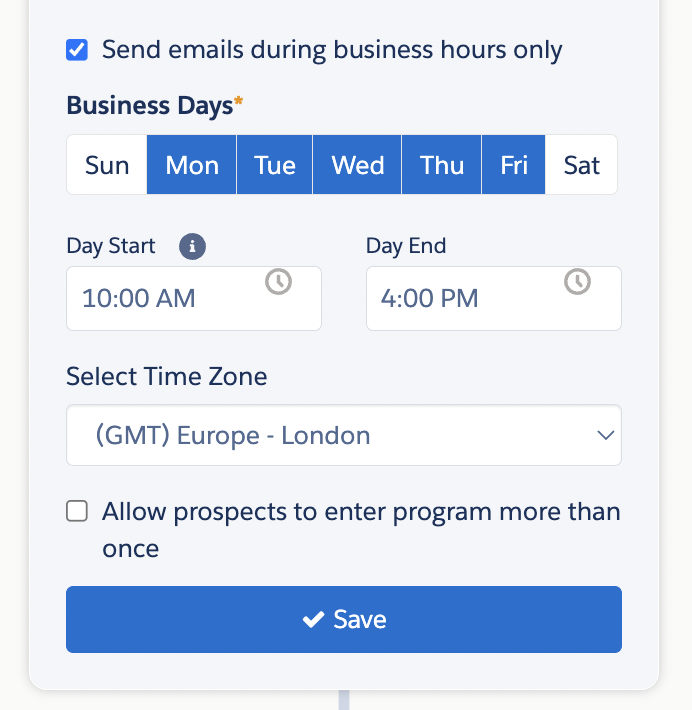
This controls when “send email” (action steps) are sent, but it doesn’t respect “business days” as being the only days that control the Engagement Studio. In other words, weekends (or any days not selected in the program’s starting settings), still count in the wait periods.
This can catch you out if you are counting out the days in your head while planning the program, and potentially leave out the additional two days wait (i.e. for weekends). For example:
- Email 1 sent on Thursday has a 5 day wait period before the next email action. You may expect that email 2 will be sent on the following Thursday.
- However, email 2 will be sent on Tuesday, as that will be day 5 (Friday, Saturday, Sunday, Monday, Tuesday).

9. Pardot Wait Time in Hours (and Days!)
Wait times are set as “number of days” and as of the Spring ‘23 release, we’ll be able to set the wait period in “number of hours” too!
10. Pausing Prospects in Engagement Studio
When using Engagement Studio, it’s a common requirement to “pause” prospects at a certain stage of your automated flow. You may want to hold a prospect at one particular step without pausing the whole program (which would result in halting every other prospect’s progress through the program).
Think about it this way: any wait step in Engagement Studio causes prospects to wait. By reimagining the “wait” functionality, it’s so simple to implement a pause tag. If you are using Engagement Studio and want more control over the automation, this is a great hack for you to have up your sleeve!
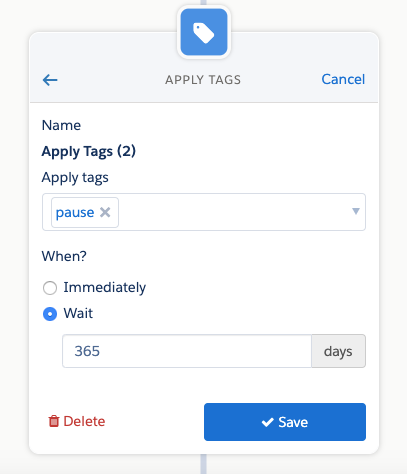
Bonus Tip: Engagement Studio “Test” Tab
Use the “Test” tab in Engagement Studio as you’re building your program, and before you activate it. While this feature may seem trivial and you’ve decided to not use it regularly, the “Test” tab can sometimes help you to identify abandoned prospects who are waiting too long (e.g. multiple triggers, one after the other).
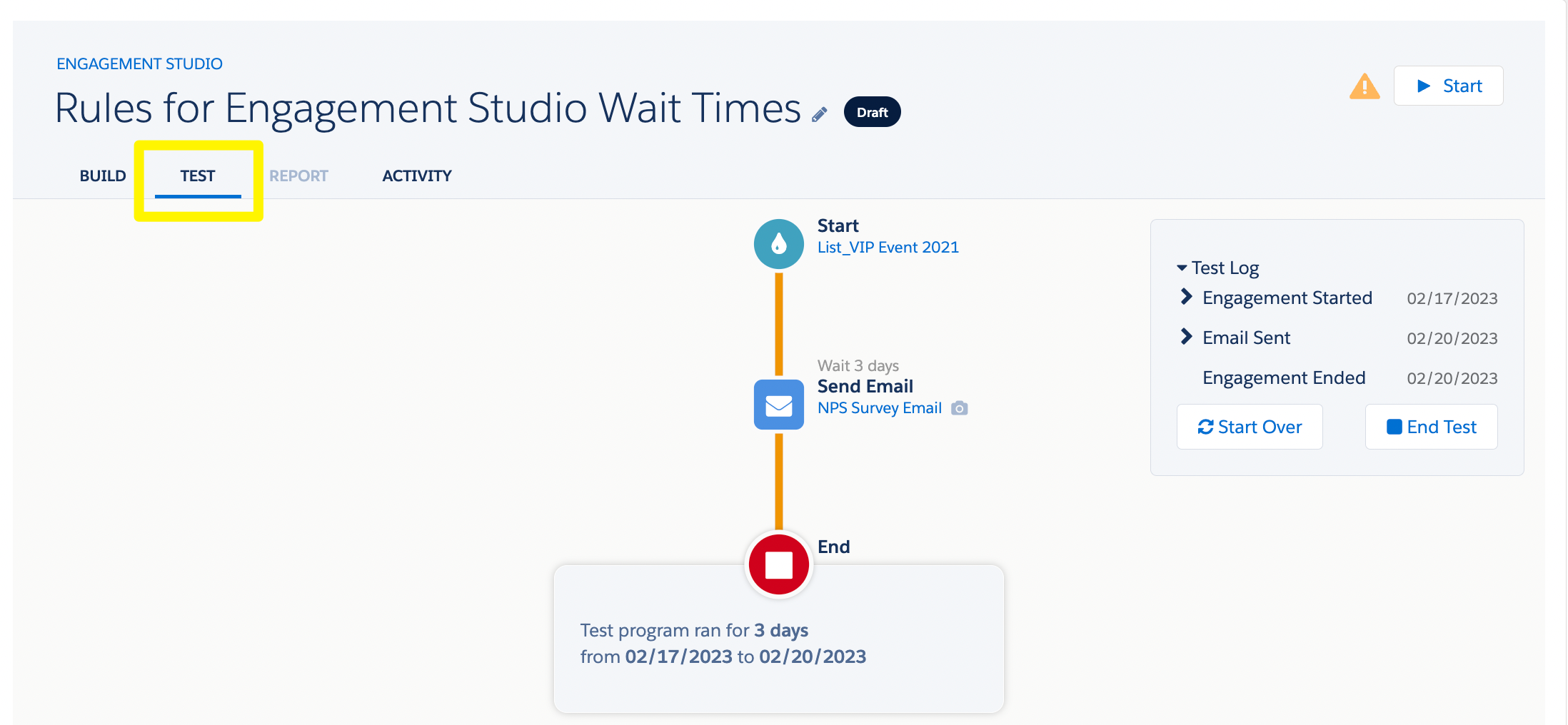
Summary
Engagement Studio paths use a combination of action, trigger and rule steps. Each of these can have a wait period added – however, how wait periods work will depend on the step type, plus the status of the program itself (running or paused).
This is why I outlined these Pardot Engagement Studio wait times rules, which hopefully, will help you to get to grips with how your specific program will treat prospects progressing through.
This Pardot article written by:
Salesforce Ben | The Drip
Lucy Mazalon is the Head Editor & Operations Director at Salesforceben.com, Founder of THE DRIP and Salesforce Marketing Champion 2020.
Original Pardot Article: https://www.salesforceben.com/the-drip/pardot-engagement-studio-wait-times/
Find more great Pardot articles at www.salesforceben.com/the-drip/
Pardot Experts Blog
We have categorized all the different Pardot articles by topics.
Pardot Topic Categories
- Account Based Marketing (ABM) (7)
- Business Units (14)
- ChatGPT / AI (3)
- Completion Actions (5)
- Connectors (10)
- Custom Redirects (4)
- Data Cloud (2)
- Demand Generation (8)
- Dynamic Content (6)
- Einstein Features (12)
- Email Delivery (17)
- Email Open Rates (3)
- Pardot A/B Testing (2)
- Email Mailability (16)
- Do Not Email (1)
- Double Opt-in (2)
- Opt Out / Unsubscribe (14)
- Email Preferences Page (6)
- Engagement Studio (16)
- Industries (1)
- Non Profit (1)
- Landing Pages (9)
- Lead Generation (1)
- Lead Management (13)
- Lead Routing (3)
- Lead Scoring (16)
- Leads (3)
- Marketing Analytics – B2BMA (9)
- Marketing Automation (1)
- Marketing Cloud (3)
- Marketing Cloud Account Engagement (4)
- Marketing Cloud Growth (2)
- New Pardot Features (6)
- Opportunities (2)
- Optimization (2)
- Pardot Admin (64)
- Duplicates (1)
- Marketing Ops (1)
- Pardot Alerts (1)
- Pardot API (2)
- Pardot Automations (3)
- Pardot Careers (12)
- Pardot Certifications (4)
- Pardot Consulting (1)
- Pardot Cookies (3)
- Pardot Custom Objects (3)
- Pardot Email Builder (8)
- Pardot Email Templates (9)
- HML (6)
- Pardot Events (16)
- Pardot External Actions (1)
- Pardot External Activities (4)
- Pardot Forms (29)
- Form Handlers (8)
- Pardot Integrations (20)
- Data Cloud (1)
- Slack (1)
- Pardot Lead Grading (5)
- Pardot Lead Source (2)
- Pardot Lightning (1)
- Pardot Migration (1)
- Pardot Nurture / Drip Campaigns (1)
- Pardot Personalization (3)
- Pardot Profiles (1)
- Pardot Releases (18)
- Pardot Sandboxes (2)
- Pardot Segmentation (5)
- Pardot Strategy (7)
- Pardot Sync (2)
- Pardot Sync Errors (1)
- Pardot Tracker Domains (5)
- Pardot Training (3)
- Pardot Vs Other MAPs (4)
- Pardot Website Tracking (2)
- Reporting (22)
- Salesforce and Pardot (31)
- Marketing Data Sharing (2)
- Pardot Users (3)
- Salesforce Automation (5)
- Salesforce Flows (2)
- Salesforce Campaigns (20)
- Salesforce CRM (3)
- Record Types (1)
- Salesforce Engage (3)
- Salesforce Queues (2)
- Security and Privacy (1)
- Tags (3)
- The Authors (504)
- Cheshire Impact (9)
- Greenkey Digital (51)
- Invado Solutions (37)
- Jenna Molby (9)
- Marcloud Consulting (6)
- Nebula Consulting (60)
- Pardot Geeks (44)
- Salesforce Ben | The Drip (235)
- SalesLabX (3)
- Slalom (4)
- Unfettered Marketing (46)
- Uncategorized (1)
- Website Tracking (2)
- Website Search (1)
More Pardot Articles
See all posts
This Pardot article written by:
Salesforce Ben | The Drip
Lucy Mazalon is the Head Editor & Operations Director at Salesforceben.com, Founder of THE DRIP and Salesforce Marketing Champion 2020.
Original Pardot Article: https://www.salesforceben.com/the-drip/pardot-engagement-studio-wait-times/
Find more great Pardot articles at www.salesforceben.com/the-drip/

